说到切削刀具,有两种材料反复出现:碳化钨和高速钢 (HSS)。
如果您想知道哪一个更适合您的工作,答案取决于您更看重什么——速度、耐用性或预算。
但如果您想要耐用的工具、更好的性能和更快的加工速度,碳化钨显然是最佳选择。
在本指南中,我们将用通俗易懂的语言为您逐一讲解。您将了解碳化钨和高速钢的区别、各自的适用场合,以及为什么碳化钨刀具更适合大多数现代应用。
1.什么是高速钢(HSS)?
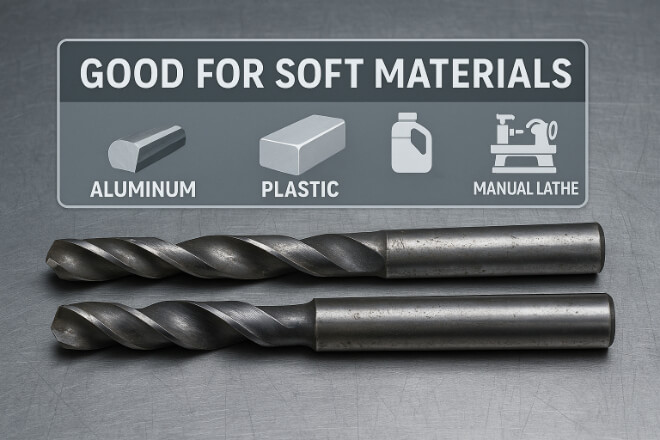
高速钢是一种用于切削刀具的硬化钢,已有数十年历史。它以坚韧、价格实惠且易于磨锐而闻名。
HSS 刀具最适合切割以下软至中等硬度的材料:
铝
低碳钢
塑料
木头
它们在手动工具、钻头和低速机器中很常见。
HSS的优点:
较低的价格
易于重新研磨或重塑
坚韧(不易碎裂)
但高速钢刀具很快就会失去锋利度,尤其是在高速旋转或切割硬质金属时。它们的耐热性也不如硬质合金刀具好。
2.什么是碳化钨?
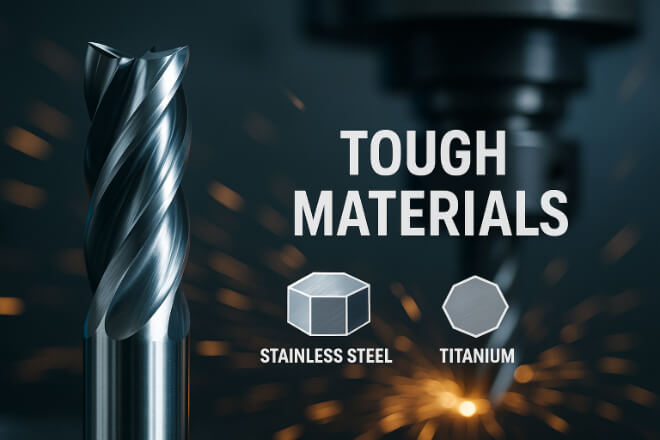
碳化钨是一种由钨和碳粉混合而成的超硬材料。它比高速钢硬度更高,刀刃保持时间也更长。
硬质合金刀具广泛应用于:
CNC加工
高速铣削
精密钻孔
切割坚硬材料(如不锈钢、钛、铸铁)
好处 碳化钨切削刀具:
保持更长时间的敏锐
切割速度更快,精度更高
耐热性更好,耐磨性更好
非常适合硬质或磨蚀性材料
硬质合金工具的前期成本较高,但使用寿命更长,并且能提供更好的效果——尤其是在大批量或精密工作中。
3. 主要区别:碳化钨与高速钢
| 特征 | 碳化钨 | 高速钢 |
|---|---|---|
| 硬度 | 非常高 – 保持更长时间的锋利 | 中等 – 更快变钝 |
| 耐热性 | 出色的 | 好的 |
| 切割速度 | 非常快 | 慢点 |
| 刀具寿命 | 5-10倍 | 更短 |
| 边缘强度 | 非常锋利但更脆 | 更坚韧,可弯曲 |
| 成本 | 更高的预付款 | 降低预付款 |
| 最佳用途 | 硬质材料、CNC、生产 | 软金属、轻型工作、手动工具 |
4. 为什么碳化钨更适合大多数工作
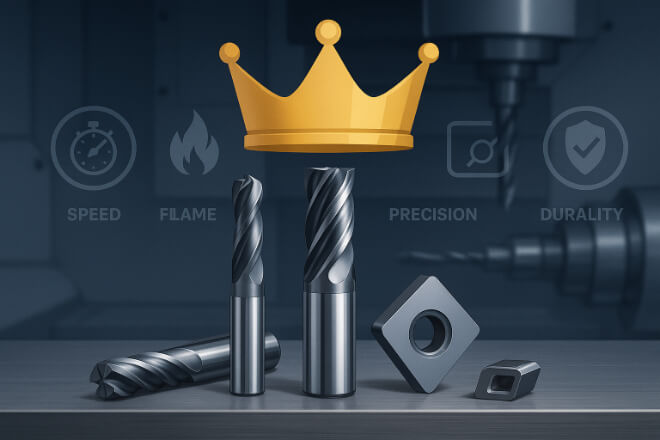
1). 持续时间更长
硬质合金刀具的使用寿命远超高速钢刀具,通常长 5 到 10 倍。这意味着更少的刀具更换次数、更少的停机时间和更少的刀具替换。
2). 切割速度更快
得益于其硬度和耐热性,碳化钨刀具的切削速度更快。您可以在更短的时间内完成更多工作,尤其是在数控机床上。
3). 更好地处理热量
热量是刀具磨损的主要原因。硬质合金在较高温度下仍能保持强度,因此在干切削或高速加工中表现更佳。
4). 更适合硬质材料
不锈钢、钛合金、硬化合金——这些材料非常坚硬,会快速磨损高速钢刀具。硬质合金正是为这些加工而设计的。
5). 更清洁的表面
硬质合金刀具可以加工出更光滑的表面,实现更精准的切割。这在需要严格公差或抛光效果时至关重要。
6). 更高效
是的,硬质合金刀具价格更高,但从长远来看,它们能为您节省成本。更长的使用寿命、更佳的性能以及更少的刀具更换次数,都能降低每个零件的总成本。
5. 高速钢仍然适用
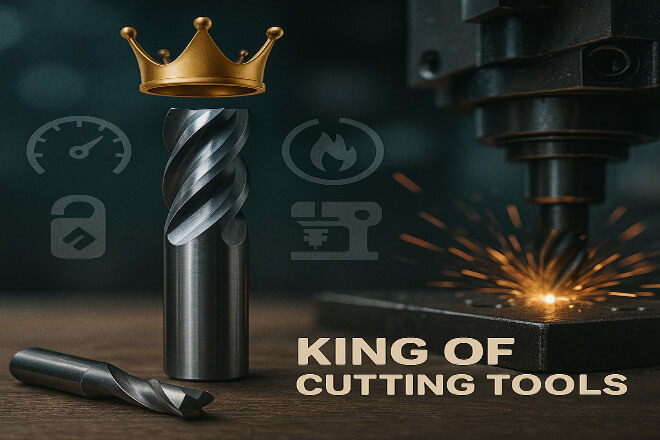
公平地说,HSS并非毫无用处。它在某些工作中仍然有价值,尤其是在以下情况下:
预算紧张
切割软金属
使用手动机器
工具经常被重新磨砺
小批量或一次性作业
如果您要切割塑料、铝或木材,或者您不需要高速,那么 HSS 可能就足够了。
但在大多数生产环境中,碳化物的表现更佳。
6. 实际用例
| 应用 | 最好的工具 | 为什么 |
|---|---|---|
| CNC加工 | 碳化钨 | 速度快、寿命长、公差小 |
| 不锈钢切割 | 碳化钨 | 耐热、耐磨 |
| 铝手动车床 | 高速钢 | 成本低且易于再研磨 |
| 航空航天部件 | 碳化钨 | 钛合金和精密零件所需 |
| DIY工作坊 | 高速钢 | 偶尔使用,经济实惠 |
7. 常见误区(揭穿真相)
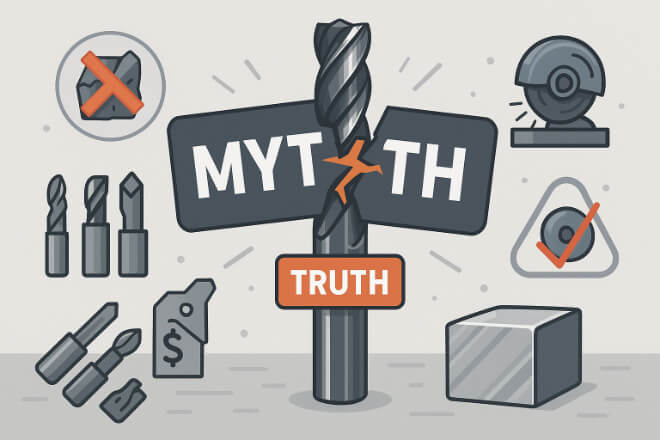
误解一:硬质合金太容易断裂。
并非如此。现代硬质合金材质比以往任何时候都更坚韧、更可靠。只要使用得当,它们即使在严苛的作业中也能保持良好的性能。
误区 2:高速钢只要磨尖了,就一样好。
磨刀有帮助,但它不会改变高速钢磨损更快、切割更慢的事实。
误区三:硬质合金只适合大型车间。
这也是错误的。许多中小型工厂使用硬质合金刀具,因为它们随着时间的推移会提供更好的价值。
最终判决:Carbide 胜出
那么,碳化钨和高速钢哪种切削刀具更好呢?
如果你想:
更长的刀具寿命
加工速度更快
更好的表面光洁度
降低长期成本
硬质材料中的高性能
那么碳化钨显然是更好的选择。
高速钢在某些情况下仍然有效,尤其是在切割软材料或手工加工时。
但对于严肃的加工(尤其是 CNC 加工),硬质合金刀具几乎在所有方面都胜过高速钢。
需要帮助为您的机器选择合适的刀具吗?请联系 雷托普 寻求专家指导或定制碳化物解决方案。
